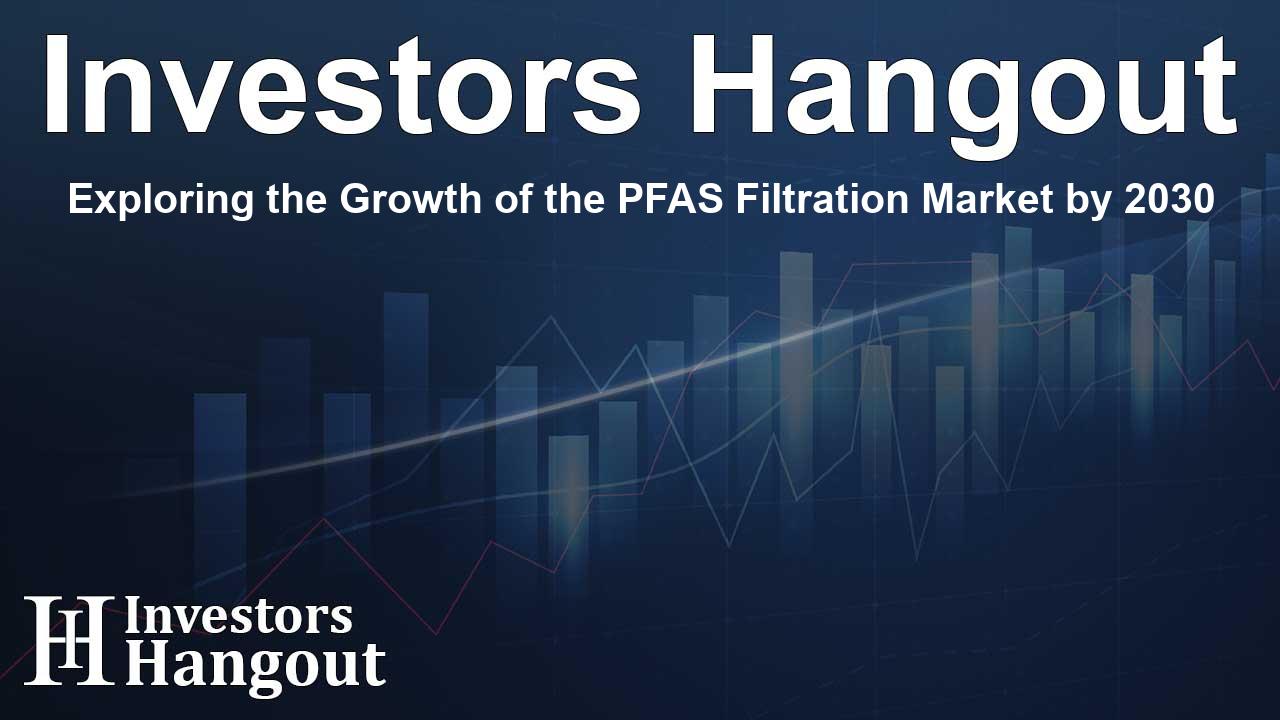Exploring the Growth of the PFAS Filtration Market by 2030

The Rising Demand for PFAS Filtration Technologies
The PFAS filtration market is experiencing rapid growth, projected to reach USD 2.99 billion by 2030, climbing from USD 2.13 billion in 2025. This significant increase stems from heightened environmental concerns, regulatory pressures, and growing public awareness regarding the health risks linked to PFAS contamination.
PFAS, or per- and polyfluoroalkyl substances, encompass a broad range of nearly 15,000 synthetic chemicals, celebrated for their heat, water, and oil resistance. Their long-lasting nature in the environment, however, poses severe risks, including associations with critical health ailments such as cancer and immune system issues. Addressing these risks, governments worldwide are tightening regulations governing acceptable PFAS levels in water sources. Consequently, industries, municipalities, and water utilities are investing heavily in advanced filtration technologies to meet compliance standards and safeguard public health.
Advanced Filtration Technologies in Focus
Key Technologies Driving Market Growth
Technologies such as granular activated carbon (GAC), ion exchange resins, reverse osmosis (RO), and nanofiltration (NF) have emerged as vital options in the PFAS filtration arena. Membrane-based technologies, particularly RO and NF, are gaining prominence due to their exceptional removal efficiency. Significant government investments, such as the USD 50 million allocation for PFAS cleanup by the US EPA, are paving the way for enhanced growth and innovative solutions within the market.
The surge in demand for safe drinking water amid mounting challenges related to costly treatment processes and complex waste management is propelling market growth. Therefore, the future appears optimistic for the PFAS filtration market as organizations work diligently to maintain clean water standards.
Activated Carbon: The Leading Choice
Effectiveness and Affordability
Among the available technologies, activated carbon remains the predominant method for PFAS filtration, recognized for its efficiency and cost-effectiveness. Activated carbon operates through adsorption, where contaminants adhere to the surface of porous carbon materials. Granular activated carbon (GAC) is especially favored in both municipal and industrial settings, thanks to its significant surface area tailored for capturing longer-chain PFAS compounds like PFOS and PFOA.
Often positioned as the first line of treatment, GAC can be smoothly integrated into existing filtration systems. However, the carbon does reach saturation and necessitates replacement or regeneration, contributing to operational costs. Despite these considerations, activated carbon's successful legacy, affordability, and extensive availability reinforce its status as the go-to choice for many. Its versatility allows for seamless integration with other technologies, such as ion exchange and membrane filtration, enhancing PFAS removal performance significantly.
Municipal Systems: A Major Market Player
Addressing Public Health Needs
The municipal segment is poised to dominate the PFAS filtration market, driven by increasing regulatory scrutiny and the imperative to provide safe drinking water to large populations efficiently. Municipal water treatment facilities serve as the frontline defense against PFAS contamination in public water supplies.
Given the rising awareness of health risks brought about by PFAS—such as cancer, endocrine disruption, and immune deficiencies—governments are enacting stricter regulations on PFAS deployment in drinking water. This urgency is leading municipalities to adopt or enhance technology-driven solutions, including granular activated carbon, ion exchange resins, and membrane-based systems like reverse osmosis. Access to capital through federal and state funding is facilitating this transition, enabling urban centers to implement more comprehensive and effective technologies for contamination remediation.
North America’s Dominance in the PFAS Sector
Regulatory Frameworks and Government Initiatives
North America is expected to remain the leading regional market within the PFAS filtration sector, propelled by stringent regulatory frameworks, high public education levels, and substantial governmental investments promoting environmental sustainability. The U.S. has been at the forefront of PFAS regulation, with the EPA establishing tighter drinking water standards.
Efforts such as designating PFOA and PFOS as hazardous substances under the Superfund law have further accelerated cleanup initiatives across the nation. Additionally, federal commitments to clean up PFAS material, exemplified by the EPA's USD 50 million investment, underline the region's priority in advancing PFAS filtration technologies. The situation is critical, given the extensive contamination of PFAS via industrial and military utilization over decades, catapulting PFAS treatments to the forefront of environmental initiatives.
Industry Players Shaping the Future
The PFAS filtration market showcases numerous key players, each contributing to the industry’s evolution. Notable names include Veolia, AECOM, WSP, Clean Earth, Wood, Xylem, Jacobs, TRC Companies, Battelle Memorial Institute, Cyclopure, and Pentair. Together, they are crafting solutions that align with stricter regulations and increasingly sophisticated consumer demands.
Frequently Asked Questions
What is the projected size of the PFAS filtration market by 2030?
The PFAS filtration market is projected to reach USD 2.99 billion by 2030.
What factors are driving the growth of the PFAS filtration market?
The growth is primarily driven by escalating environmental issues, regulatory pressures, and increased public awareness of health hazards due to PFAS contamination.
Which technology is most commonly used for PFAS filtration?
Activated carbon is the most common technology used for PFAS filtration due to its effectiveness and affordability.
Why are municipal systems key players in the PFAS filtration market?
Municipal systems are crucial as they provide safe drinking water to citizens and are primary barriers against PFAS contamination.
How is North America performing in the PFAS filtration market?
North America is expected to lead the PFAS filtration market due to robust regulations, public awareness, and significant government investment aimed at sustainability.
About The Author
Contact Olivia Taylor privately here. Or send an email with ATTN: Olivia Taylor as the subject to contact@investorshangout.com.
About Investors Hangout
Investors Hangout is a leading online stock forum for financial discussion and learning, offering a wide range of free tools and resources. It draws in traders of all levels, who exchange market knowledge, investigate trading tactics, and keep an eye on industry developments in real time. Featuring financial articles, stock message boards, quotes, charts, company profiles, and live news updates. Through cooperative learning and a wealth of informational resources, it helps users from novices creating their first portfolios to experts honing their techniques. Join Investors Hangout today: https://investorshangout.com/
The content of this article is based on factual, publicly available information and does not represent legal, financial, or investment advice. Investors Hangout does not offer financial advice, and the author is not a licensed financial advisor. Consult a qualified advisor before making any financial or investment decisions based on this article. This article should not be considered advice to purchase, sell, or hold any securities or other investments. If any of the material provided here is inaccurate, please contact us for corrections.
